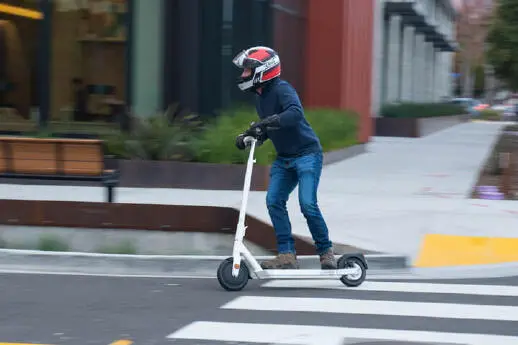How are the regulations on the maximum speed limit of electric scooters formulated?
How are the regulations on the maximum speed limit of electric scooters formulated?
With the popularity of electric scooters, their safety has received widespread attention, and the formulation of regulations on the maximum speed limit has become an important part of ensuring the safety of users and roads. The following is the formulation process of the regulations on the maximum speed limit of electric scooters and the considerations behind them.

1. Background of the formulation of regulations
As an emerging means of transportation, electric scooters were originally designed to solve the problem of "last mile" travel. However, due to their lightness and flexibility, the use of electric scooters on the road has gradually increased, bringing many safety hazards. Especially when the speed is too fast, electric scooters are prone to traffic accidents and cause harm to riders and pedestrians.
2. Basis for formulation
2.1 Safety considerations
Accident data statistics: Through the analysis of a large number of traffic accidents, it is found that excessive speed is one of the main causes of electric scooter accidents. Speed limits can effectively reduce the probability of accidents and reduce the risk of injury to riders and pedestrians.
Braking distance: When driving at high speeds, the braking distance of electric scooters will increase significantly, increasing the danger in emergency situations. Speed limits help shorten the braking distance and improve safety.
2.2 Technical Parameters
Motor Power: The motor power of an electric scooter directly affects its maximum speed. In order to limit the speed, regulations usually limit the motor power. For example, the Chinese national standard stipulates that the motor power of an electric scooter shall not exceed 400 watts.
Battery Voltage: Battery voltage is also an important factor affecting speed. Regulations usually limit battery voltage to ensure that electric scooters operate within a safe speed range.
2.3 Reference to International Standards
EU Standards: The EU's electric scooter standard EN 17128:2020 stipulates that the maximum speed of electric scooters must be within the range of 20-25 km/h.
US Standards: The speed limit regulations for electric scooters vary from state to state in the United States, but most states limit the maximum speed to around 25 km/h.
3. Development Process
3.1 Standard Drafting
Research and Analysis: Relevant departments and experts conduct in-depth research on the technical parameters, usage scenarios and safety risks of electric scooters, and collect a large amount of data and cases.
Drafting: Based on the research results, draft a preliminary speed limit standard draft to clarify the technical indicators of electric scooters such as the maximum speed, motor power and battery voltage.
3.2 Soliciting opinions
Public participation: Solicit opinions from the public on the draft, and widely listen to the opinions and suggestions of electric scooter users, manufacturers, industry associations and experts and scholars.
Expert review: Organize experts to review the draft to ensure its scientificity, rationality and feasibility.
3.3 Revision and improvement
Feedback integration: According to public opinions and expert review results, revise and improve the draft to ensure that the regulations meet safety requirements and take into account the convenience of users and the actual production of enterprises.
Finalization: After multiple revisions and reviews, the final speed limit regulations are formed.
3.4 Formal release and implementation
Release: The speed limit regulations are officially released by the National Standardization Administration or relevant government departments.
Publicization and training: Publicize the content of the regulations through various channels, organize production enterprises and users to conduct training, and ensure the effective implementation of the regulations.
Supervision and law enforcement: Relevant departments supervise and inspect the production, sales and use of electric scooters, and impose penalties on violations of regulations.
4. Comparison of regulations in various countries
Country/Region Maximum speed (km/h) Motor power (W) Battery voltage (V)
China 25 400 60
EU 20-25 250 48
USA 25 500 60
Japan 20 250 48
5. Summary
The formulation of regulations on the maximum speed limit of electric scooters is a scientific and rigorous process involving many considerations and participation from multiple parties. The implementation of speed limit regulations can effectively reduce the risk of accidents of electric scooters and ensure the safety of riders and pedestrians. At the same time, the formulation of regulations has also promoted the healthy development of the electric scooter industry and provided consumers with safer and more reliable products.














